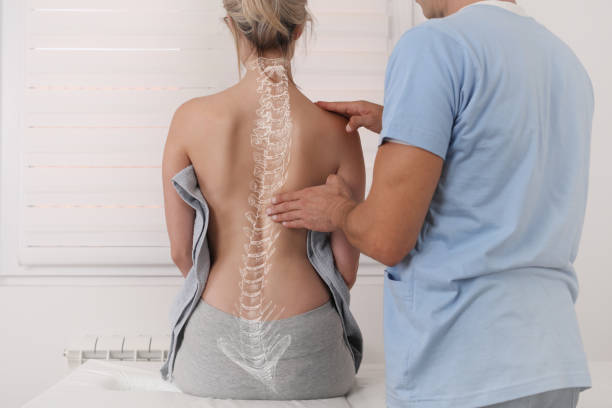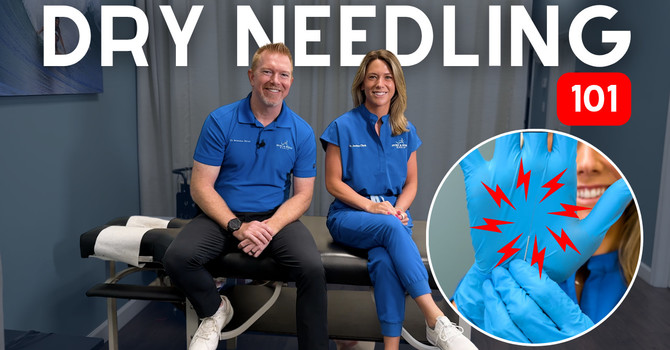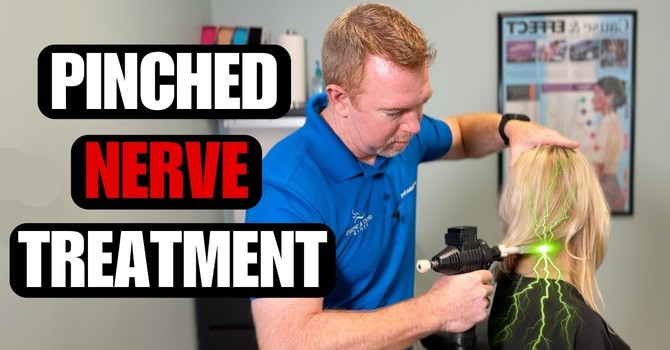
A mother bends over to pick up her child and feels a sharp pain in her back. A business man is on his lunch break and is rear-ended at a traffic light, causing neck pain and hand numbness. What’s the cause of their pain? A disc herniation.
Vertebral discs are found between the bones (vertebrae) that make up your spine. Healthy discs have two primary functions: to act as shock absorbers for the spinal joints; and to act as spacers between the vertebrae where your nerves exit the spinal column.
When discs start to break down (degenerate), movement in your vertebrae decreases and the discs become dehydrated. As they dehydrate, the spaces between your vertebrae narrow at the area where the nerves exit. This disc narrowing can cause nerve compression and pain. Additionally, as the discs in your spine dehydrate and start to tear, the edges of the discs can bulge. This bulging can lead to a disc herniation, creating neck or back pain and, at times, numbness and weakness in the arms and legs.
While some disc herniations require surgery, only about 1% of back pain sufferers are surgical candidates. While surgery may be a possible solution as a last resort, a non-invasive, highly effective alternative does exist. Spinal decompression therapy can eliminate back pain without surgery.
This alternate therapy offers back pain sufferers a non-surgical option that may restore normal function to damaged spines. Spinal decompression melds modern technology with the proven techniques of chiropractic medicine. By using precision computerized equipment, a chiropractor is able to administer targeted therapy to the exact areas that need treatment. Spinal decompression utilizes comfortable traction therapy to relieve back, leg pain, neck and arm pain. During this procedure, by cycling through distraction and relaxation phases and by proper positioning, a spinal disc can be isolated and placed under negative pressure, causing a vacuum effect within the disc.
The vacuum effect accomplishes two things. From a mechanical standpoint, disc material that has protruded or herniated from the disc can be pulled back within the disc, taking pressure off the nerves. When this pressure is relieved by the vacuum effect created within the disc, symptoms such as arm and leg numbness are relieved. In addition, the vacuum effect stimulates blood supply to the disc, secondarily stimulating a healing response. This results in pain reduction and proper healing at the injured site.
Generally, most patients with slipped and/or bulging (herniated) discs, as well as those who have chronic neck and/or back pain, are good candidates for spinal decompression therapy. Patients may also find relief using this therapeutic procedure for other specific conditions including spinal stenosis, sciatica, facet syndrome, degenerative disc disease, spondylosis or even failed spinal surgery.
Spinal Decompression Therapy has been shown to have a 71-90% success rate and has been well received by patients suffering from a variety of conditions. Many people have suffered long-term debilitating pain due to car accidents, the physical nature of their careers or from playing their favorite sports. But with the advent of Spinal Decompression, long-term sufferers are beginning to see the light.
Dr. Brandon Nevel is a certified chiropractic sports physician, certified chiropractic extremities practitioner, and a USPTA tennis professional. For more information on Spinal Decompression Therapy or to schedule a consultation, visit https://thejupiterchiropractor.com or call Dr. Nevel of Sport & Spinal Rehab.






